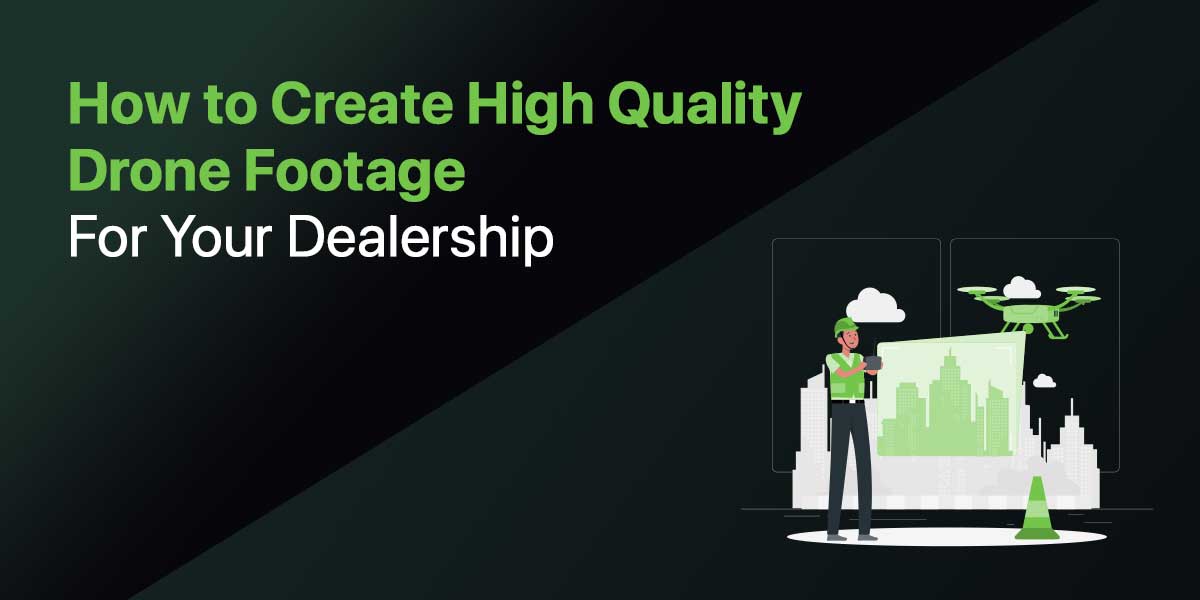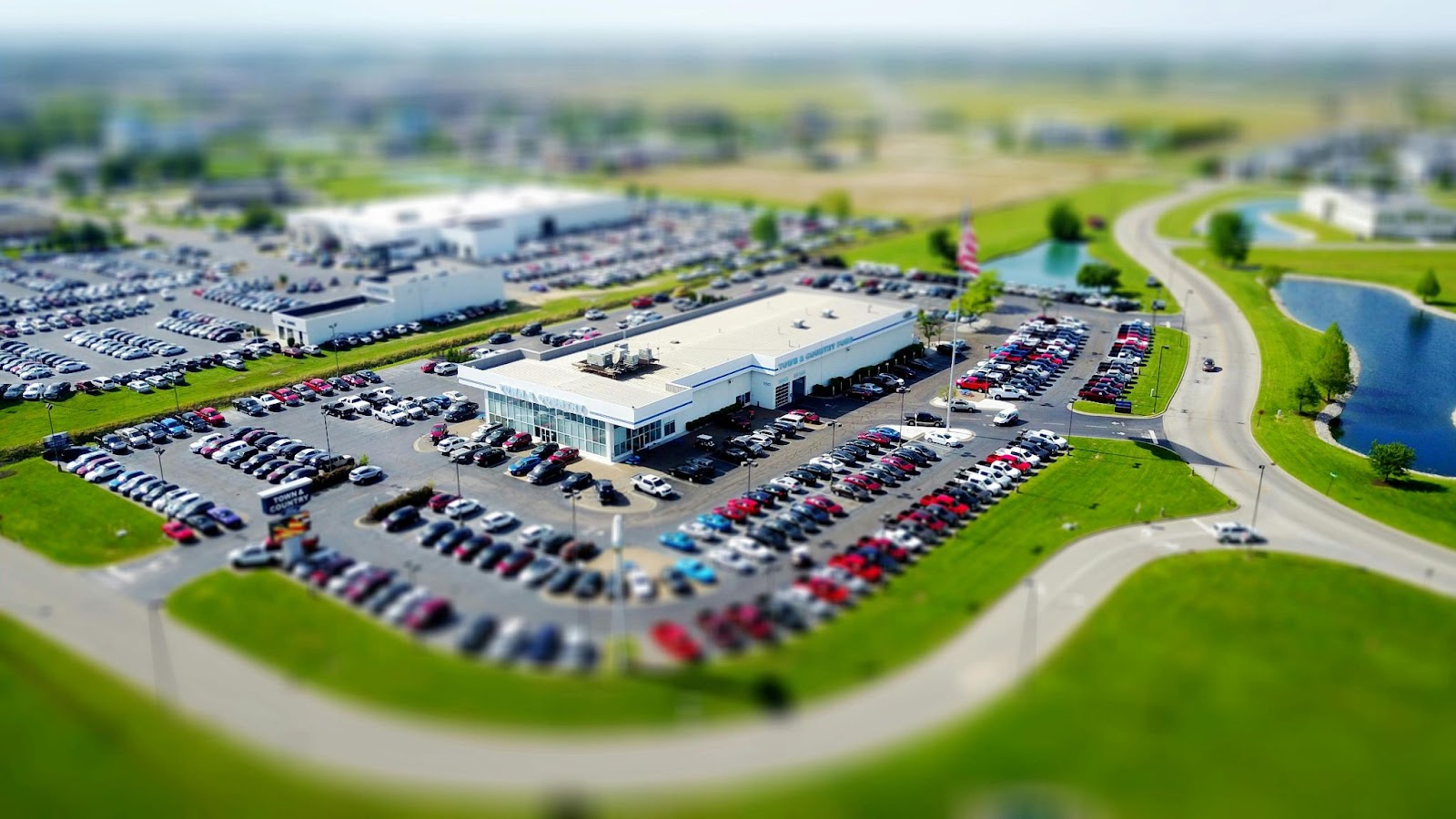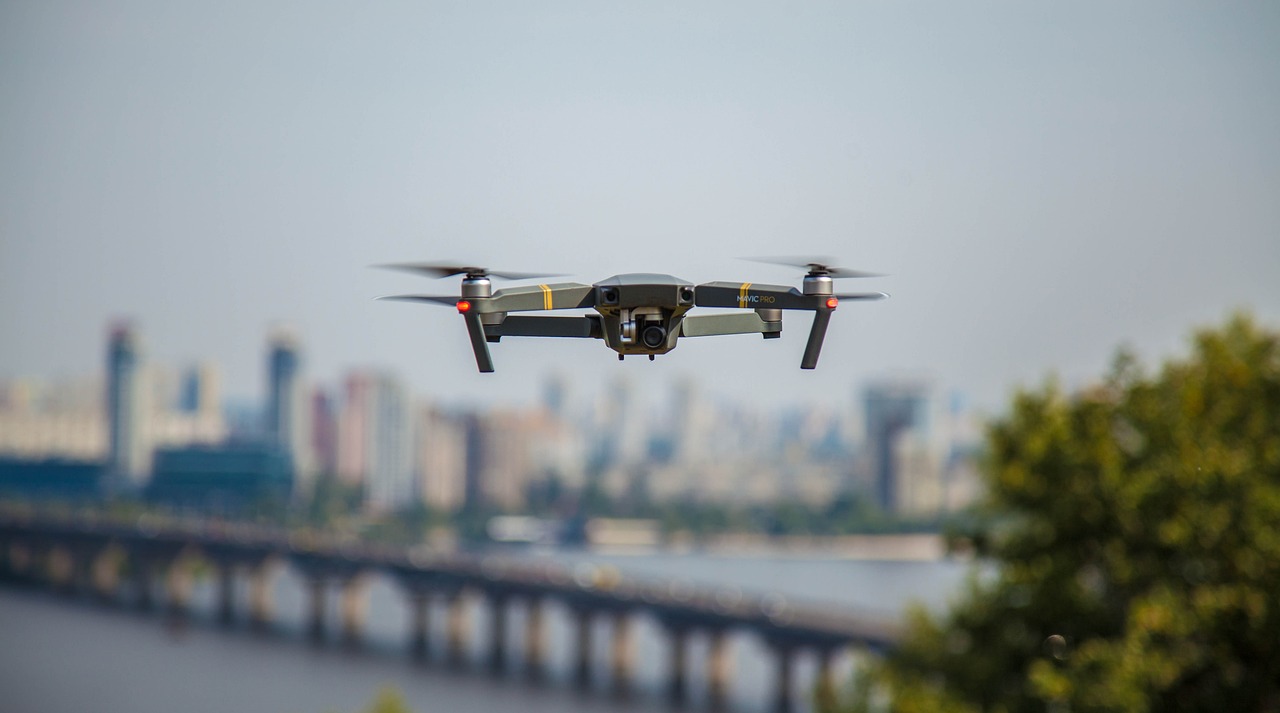How to Create High-Quality Drone Footage For Your Dealership
Joe Montgomery January 26, 2025

The rise of aerial videography has revolutionized the ways in which dealerships present their inventory. By utilizing drones to capture breathtaking footage, dealerships can stand out in a competitive market. This article will guide you through the essential steps to create high-quality drone footage for your dealership, covering everything from understanding drone basics to postproduction techniques.
Understanding the Basics of Drone Videography
To effectively use drones for videography, it’s crucial to understand both the hardware involved and the fundamental videography concepts. Familiarizing yourself with these elements will enable you to maximize the potential of your drone and produce stunning visuals for your dealership.

Choosing the Right Drone for Your Dealership
The first step in creating high-quality drone footage is selecting a drone that meets your specific needs. Several factors should be considered:
- Camera Quality: Look for drones equipped with a high-resolution camera capable of shooting in at least 1080p or 4K.
- Flight Time: A longer battery life will allow for more continuous shooting time, reducing interruptions during your sessions.
- Stability Features: Drones with advanced stabilization technology will ensure smoother footage even during windy conditions.
- Ease of Use: Some drones come with beginner modes and intuitive controls, making them suitable for operators with varying skill levels.
Learning the Fundamentals of Drone Operation
Mastering drone operation is essential for capturing high-quality footage. Here are some key aspects to focus on:
First, get familiar with the drone’s controls and features by practicing in open, obstacle-free areas. This practice will help you develop the necessary skills to handle the drone effectively. Secondly, understanding how altitude and speed affect the footage quality is vital. Slower speeds often lead to better cinematic shots, while varying altitudes can provide different perspectives on the dealership’s layout.
In addition to basic control, it’s important to learn about the various flight modes that many drones offer. For instance, some drones come with intelligent flight modes such as Follow Me, Waypoint Navigation, and Orbit, which can automate complex maneuvers and allow you to focus on capturing the perfect shot. These features can be particularly beneficial when showcasing a large dealership, as they can help create dynamic and engaging footage that highlights the scale and variety of your inventory.
Moreover, understanding the legal regulations surrounding drone operations is crucial. Familiarize yourself with local laws regarding drone flight, including no-fly zones, altitude limits, and required permits. Compliance with these regulations not only ensures the safety of your operations but also protects your dealership from potential legal issues. Keeping abreast of any changes in legislation can also help you adapt your filming strategies accordingly, ensuring that your drone videography remains both effective and lawful.
Planning Your Dealership’s Drone Footage
Preparation is key when it comes to successful drone videography. By planning adequately, you can ensure that your shoot will go smoothly and yield excellent results.
Scouting Your Dealership Location
Before you start shooting, it’s essential to assess your dealership’s location. Consider the following:
- Landscaping: A well-kept landscape can enhance the visuals significantly.
- Lighting: Plan your shoot during the golden hours of sunrise or sunset to take advantage of natural lighting.
- Accessibility: Ensure that there are no no-fly zones or obstacles that could interfere with your drone’s operation.
Scouting not only helps in choosing the best angles but also aids in identifying any potential challenges you might face during the shoot. For instance, if your dealership is near busy roads or airports, you may need to coordinate with local authorities to secure the necessary permits. Additionally, consider how the layout of your dealership can influence the drone’s flight path; a well-planned route can help avoid unnecessary interruptions and ensure a more efficient filming process.
Creating a Shooting Schedule
Scheduling the shoot is just as important as the location itself. Create a detailed timeline of when and where each segment of filming will take place, considering factors such as:
- Inventory Focus: Decide which vehicles or areas you want to highlight, and prioritize them in your schedule.
- Weather Conditions: Check weather forecasts and establish backup dates to avoid postponed shoots.
- Personnel Availability: Ensure that key staff members are present for critical shots, such as customer interactions or team introductions.
Moreover, it’s beneficial to incorporate time for unexpected delays or technical issues that may arise during the shoot. Having a flexible schedule allows you to adapt to changes without compromising the quality of your footage. Consider also including time for reviewing the footage on-site; this can help you identify any additional shots that may be needed, ensuring that you capture all the essential elements of your dealership’s offerings. Engaging your team in the planning process can also provide valuable insights, as they may have unique perspectives on what aspects of the dealership resonate most with customers.
Techniques for Capturing High-Quality Footage
Once you’re set with the right equipment and planning, it’s time to delve into essential filming techniques that will enhance the quality of your footage.
Mastering Drone Flight Patterns
To create visually appealing footage, mastering flight patterns is crucial. Here are some techniques to employ:
- Object Tracking: Utilize the tracking mode to follow cars or individuals, creating dynamic footage.
- Aerial Circles: Fly in a circular pattern around your dealership or cars to showcase them from multiple angles.
- Reveal Shots: Start from a distance and gradually move closer to showcase the dealership’s surroundings, creating a sense of discovery.
In addition to these techniques, consider incorporating altitude changes during your flight. By varying your height, you can create a more dramatic effect, emphasizing the scale of your dealership or the beauty of the surrounding landscape. For instance, starting high and slowly descending can evoke a feeling of intimacy, while ascending can provide a breathtaking overview that highlights the dealership’s location and nearby attractions. Furthermore, practicing smooth transitions between these movements will help maintain a professional look, avoiding jarring cuts that can detract from the viewer’s experience.
Utilizing Different Camera Angles
Using various camera angles can significantly elevate the storytelling aspect of your footage. Consider shooting from:
- High Angles: Capture the entire dealership layout and surrounding area.
- Low Angles: Focus on individual cars, capturing intricate details that might not be seen from above.
- Tracking Shots: Follow moving vehicles to give a sense of action and engagement.
Moreover, experimenting with unconventional angles can add a unique flair to your footage. For example, shooting from the perspective of a passenger inside a car can create an immersive experience, allowing viewers to feel as if they are part of the journey.
Additionally, incorporating close-up shots of specific features—like the sleek lines of a car or the dealership’s signage—can help highlight the quality and aesthetic appeal of what you are showcasing. Remember, the goal is to not only inform but also captivate your audience, so don’t shy away from mixing up your angles and perspectives to keep the footage fresh and engaging.
Postproduction of Your Drone Footage
After capturing the footage, the next critical phase is postproduction. Editing your footage effectively can make a significant difference in the final product.
Editing Your Drone Footage
Editing allows you to cut, rearrange, and enhance the footage captured. Here are some tips to consider:
- Choose a Good Editing Software: Programs like Adobe Premiere Pro or Final Cut Pro offer advanced features suitable for drone footage.
- Stabilization: Use software stabilization tools to fix any shaky footage captured during the flight.
- Color Grading: Apply color grading techniques to enhance the mood and feel of your montage.
In addition to these fundamental techniques, consider incorporating transitions between clips to create a seamless flow. Smooth transitions can significantly enhance the viewer’s experience, making the video more engaging. Furthermore, utilizing keyframes can help in animating certain aspects of your footage, such as zooming in on a specific feature of a car or panning across a stunning landscape. This level of detail not only captivates the audience but also showcases your skills as a videographer.
Adding Music and Voice-Overs
To complement the visuals, adding music and voice-overs can enhance the emotional appeal. Consider the following:
- Music Selection: Choose background music that matches the style and tone of the dealership and the vehicles showcased.
- Voice-Over Scripts: Create concise scripts to narrate critical points about featured cars or services, adding context to the footage.
Moreover, syncing the music with the visuals can create a powerful emotional connection. Pay attention to the beats and crescendos in the music, aligning them with key moments in the footage for maximum impact. Additionally, consider using sound effects to enrich the audio landscape; the sound of a car engine revving or the ambient noise of a bustling dealership can add layers of realism and depth to your project. This meticulous attention to audio detail can transform a good video into a truly immersive experience for your audience.
Legal Considerations for Drone Videography
Finally, it’s crucial to understand and navigate the legal landscape of drone videography, as failure to do so could result in significant penalties. The legal framework surrounding drone usage is not only about compliance but also about ensuring the safety and privacy of individuals and property. As drone technology continues to evolve, so too do the laws governing their use, making it imperative for videographers.

Conclusion
Creating high-quality drone footage for your dealership is a multifaceted process that requires thoughtful consideration of equipment selection, videography techniques, and legal compliance. By following the outlined steps, conducting thorough planning, and mastering the art of editing, you can elevate your marketing efforts and present your dealership in a visually stunning manner.
At Overfuel, we’re revolutionizing the way dealerships serve their customers online. We believe in a platform approach: a single, integrated solution that provides everything a dealership needs to sell more inventory while saving thousands in monthly fees. Discover how we can help you achieve your goals by visiting our website.